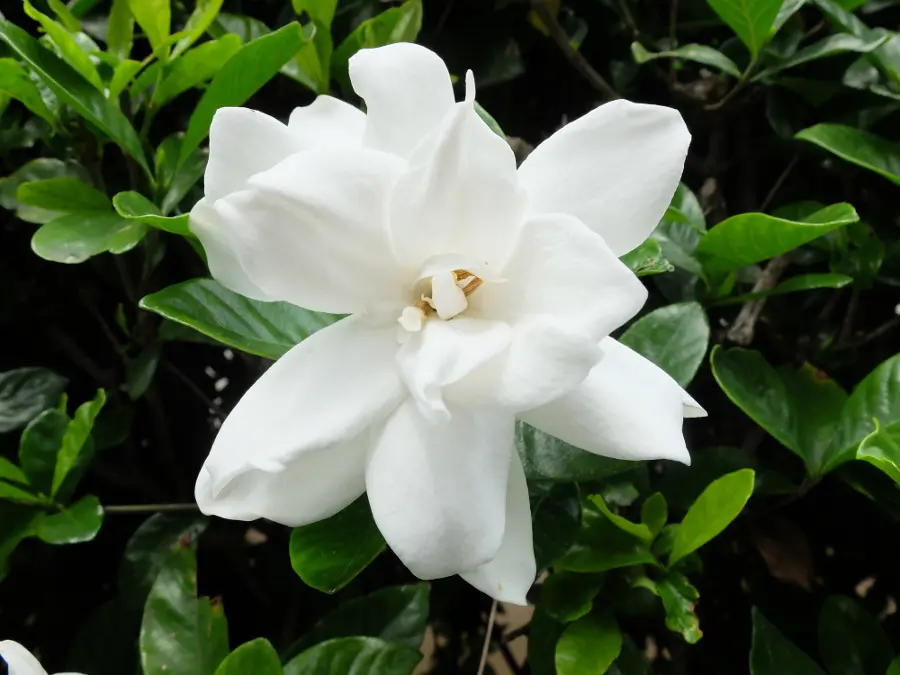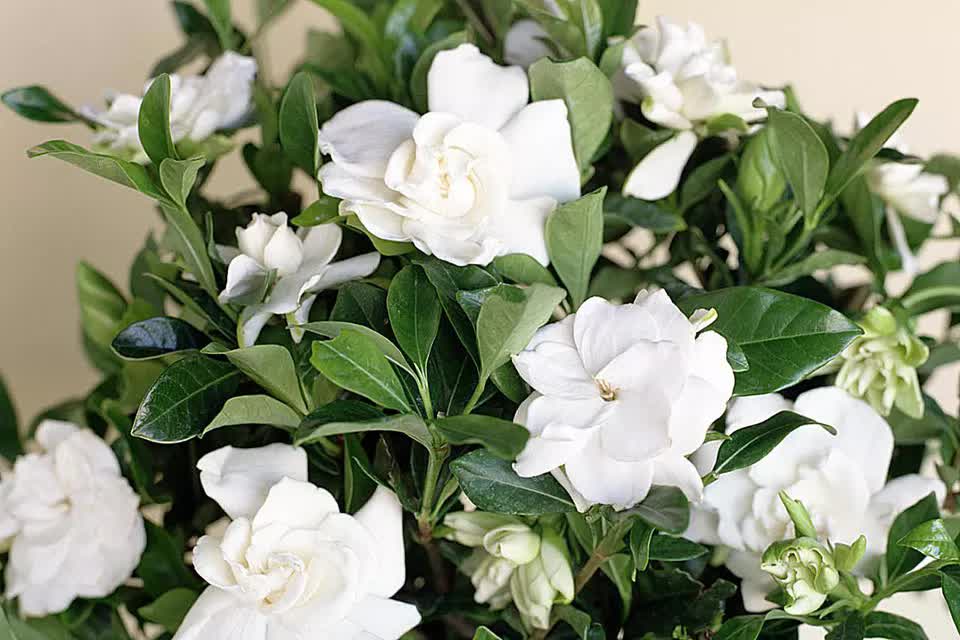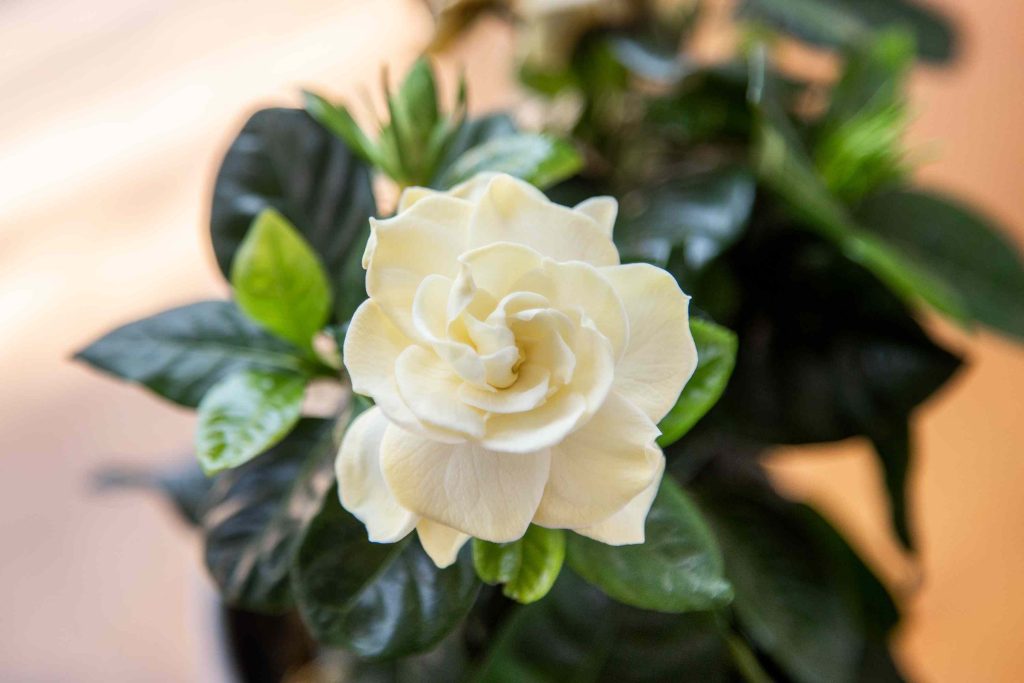How To Grow Gardenias Indoors (Gardening Tips)
Updated: 01 Oct, 2023
368
Ensuring the vitality of your gardenia yields not only enduring blossoms but also a flourishing indoor plant. This guide unveils the essential steps for successful gardenia cultivation indoors, addressing concerns like flower bud drop, yellowing leaves, and proper pruning techniques, while maximizing the potential for abundant blooms.
Sustaining a gardenia demands year-round care, a task that proves rewarding given the plant’s captivating aroma and the elegance of its creamy white flowers. When those first flower buds emerge, it’s time to elevate your gardening prowess. Secure an optimal location with ample light and free from drafts.
Beware of potential harm from natural gas emissions, making proximity to a gas stove or fireplace ill-advised. Provided it basks in a cool, shaded spot. However, vigilance is key; should temperatures plummet below 60°F, a return indoors is warranted. For those tended with care, a gratifying encore bloom may grace your gardenia in the autumn months.
| Common Name | Gardenia, cape jasmine |
| Botanical Name | Gardenia jasminoides |
| Family | Rubiaceae |
| Plant Type | Shrub |
| Mature Size | 5-6 ft. tall, 5-6 ft. wide |
| Sun Exposure | Partial |
| Soil Type | Well-drained |
| Soil pH | Acidic |
| Bloom Time | Spring, summer, fall |
| Flower Color | White |
| Hardiness Zones | 8 to 11 (USDA) |
| Native Area | Asia |
| Toxicity | Toxic to pets |
Gardenia Care
Gardenias thrive outdoors exclusively within USDA Zones 8 to 11. However, if you reside in a cooler climate, you can give your gardenia houseplant a taste of the outdoors during the summer, provided temperatures remain at 60°F and above. Optimal planting entails choosing a location with light to medium shade, free from competition with tree roots.
To cultivate flourishing gardenias, prepare the planting area meticulously by incorporating organic matter. This enriches the soil, ensuring it is both nutrient-rich and well-draining with an acidic pH. Maintaining a consistent layer of mulch is crucial, serving to suppress weeds and regulate moisture levels.
A well-cared-for gardenia presents as a compact beauty adorned with lush, deep green leaves, gracing your space with blooms either in early spring or early summer, contingent on its placement. This plant revels in daytime temperatures ranging from 75 to 82°F, necessitating a relatively warm indoor environment for successful cultivation. Hence, potted gardenias must be ushered indoors on nights when temperatures dip below the minimum threshold.

Choosing the Right Location:
Consider USDA Zones: Gardenias thrive in Zones 8 to 11, primarily. Cooler Climates: In colder regions, opt for outdoor exposure in temperatures of 60°F and higher during the summer.
Light and Shade Requirements:
Light Preferences: Gardenias flourish in light to medium shade. Avoid Tree Root Competition: Select a location where the plant won’t face competition from tree roots.
Soil Preparation and Amendment:
Organic Material: Amend the planting area with organic material for rich, well-draining, and acidic soil. Mulching: Maintain a thick layer of mulch to control weeds and regulate moisture levels in the soil.
Maintaining Optimal Temperatures:
Temperature Preferences: Daytime temperatures of 75 to 82°F are ideal for gardenias. Indoors in Cooler Climates: Ensure a warm indoor environment for successful growth, especially during colder periods.
Seasonal Considerations:
Summer Outdoors: Allow gardenias to bask outdoors in summer, but bring them inside if temperatures drop below 60°F. Encore Blooms: With proper care, some gardenias may bloom a second time in the fall.
Fertilizer:
Nourish garden gardenias in mid-March and again in late June, utilizing an acid-rich fertilizer. Follow the recommended dosage provided on the product, either mixing it directly into the soil or diluting it with water. It’s prudent to slightly underdose to prevent over-fertilization. Cease feeding your gardenias in the autumn to deter new growth before dormancy.
For container plants, consider feeding them approximately every three weeks with an acidifying fertilizer akin to those used for azaleas or camellias. Organic gardeners may opt for blood meal, fish emulsion, or bone meal. Regularly consult product guidelines for dosage and conduct periodic pH tests on the soil.
How to Grow Gardenia
Growing gardenias from seed can be a rewarding but somewhat challenging endeavor. Here’s a step-by-step guide to help you get started:
Materials You’ll Need:
- Gardenia seeds
- Seed starting mix or well-draining potting soil
- Seed trays or small pots
- Plastic dome or plastic wrap (optional)
- Grow lights or a sunny window
- Watering can or spray bottle
- Fertilizer suitable for acid-loving plants
Step 1: Gather Supplies
Ensure you have all the necessary materials ready, including fresh gardenia seeds and suitable containers.
Step 2: Prepare the Soil
Fill the seed trays or pots with a well-draining seed starting mix or potting soil. Make sure it’s slightly moist but not waterlogged.
Step 3: Plant the Seeds
Gently press the gardenia seeds into the soil, but do not bury them too deep. They should be just covered with a light layer of soil.
Step 4: Provide Moisture
Mist the soil surface with a spray bottle or water lightly to ensure the seeds have adequate moisture. Avoid overwatering, as this can lead to rot.
Step 5: Create a Mini Greenhouse (Optional)
Cover the seed trays or pots with a plastic dome or loosely wrap them with plastic wrap. This helps create a humid environment, mimicking a greenhouse.
Step 6: Provide Adequate Light
Place the trays or pots in a location with bright, indirect light. If natural light is insufficient, consider using grow lights.
Step 7: Maintain Consistent Temperature
Gardenia seeds require warm temperatures to germinate, ideally around 70-75°F (21-24°C). Use a heating mat if necessary.
Step 8: Be Patient
Germination can take several weeks, so be patient. Keep an eye on the soil moisture and provide light as needed.
Step 9: Transplant Seedlings
Once the seedlings have developed several sets of true leaves, they can be transplanted into larger pots with well-draining soil.
Step 10: Provide Proper Care
Continue to grow the gardenia seedlings in a warm, well-lit location. Water them when the soil surface starts to dry out, and feed them with a balanced, acid-loving plant fertilizer according to the package instructions.
Step 11: Gradual Acclimation
When the seedlings are well-established and the weather is suitable, gradually acclimate them to outdoor conditions before transplanting them into the garden.

Types of Gardenias
Gardenias are a diverse group of flowering plants known for their fragrant, creamy white blossoms and glossy, dark green leaves. There are several popular varieties of gardenias, each with unique characteristics and growth habits. Here are some notable types of gardenias:
Gardenia jasminoides (Common Gardenia): This is the most well-known and widely cultivated species of gardenia. It is a compact, evergreen shrub with glossy leaves and highly fragrant, double or single white flowers. Varieties within Gardenia jasminoides include:
- Aimee Yoshioka’: Notable for its large, double flowers and strong fragrance.
- August Beauty‘: Known for its profuse blooming and glossy leaves.
- Veitchii’: Features smaller, single flowers and a more compact growth habit.
Gardenia taitensis (Tahitian Gardenia): Native to Tahiti, this species has larger, single white flowers and a strong, sweet fragrance. It is often used in the production of floral leis.
Gardenia thunbergia (Starry Gardenia): This species is characterized by its star-shaped, single white flowers. It tends to be more cold-tolerant than other gardenia varieties.
Gardenia radicans (Dwarf Gardenia): As the name suggests, this is a smaller, low-growing variety of gardenia. It is often used as a ground cover or in containers.
Gardenia tubifera (Kuchinashi): Native to Japan, this species has tubular-shaped flowers and a distinct, sweet scent. It is known for its unique floral structure.
Gardenia carinata (Golden Magic): This variety is recognized for its golden-yellow blooms, which differentiate it from the more common white-flowered gardenias.
Gardenia brighamii (Native Hawaiian Gardenia): Endemic to Hawaii, this species has large, fragrant, single white flowers and is highly valued in Hawaiian culture.
Gardenia vietnamensis: Native to Vietnam, this species features small, fragrant flowers and is known for its compact growth habit.
It’s important to note that each variety of gardenia may have specific care requirements, such as temperature tolerance and sunlight preferences. Before planting a specific type of gardenia, it’s advisable to research and understand its particular needs to ensure successful growth and blooming.
Potting and Repotting Gardenia
Potting and repotting gardenias is crucial for their health and well-being. These steps ensure that the plant has enough room to grow and access to fresh nutrients. Here’s a guide to potting and repotting gardenias:
Potting a Gardenia:
Choose the Right Pot: Select a pot that is 2 inches larger in diameter than the current one. Ensure it has drainage holes at the bottom to prevent waterlogging.
Prepare the Pot: Place a layer of small stones or broken pottery at the bottom of the pot to improve drainage.
Select Quality Soil: Use a well-draining, acidic potting mix designed for acid-loving plants like azaleas and camellias.
Remove the Gardenia: Gently tap the current pot to loosen the roots. Carefully remove the gardenia from its old container, taking care not to damage the roots.
Inspect the Roots: Check for any signs of root rot, damage, or overcrowding. Trim away any dead or damaged roots with clean, sharp scissors or pruning shears.
Place the Gardenia in the New Pot: Position the gardenia in the center of the new pot at the same depth it was in the old pot. Add additional soil around the sides, ensuring the crown of the plant is slightly above the soil level.
Water Thoroughly: After potting, water the gardenia thoroughly to settle the soil and provide initial hydration.
Place in Appropriate Location: Put the potted gardenia in a spot with bright, indirect light and a stable temperature.
Repotting a Gardenia:
Gardenias generally require repotting every 2-3 years, or when they become root-bound. Signs that a gardenia needs repotting include roots emerging from the drainage holes, reduced growth, or a decline in health.
Choose the Right Time: The best time to repot a gardenia is in the spring or early summer, when it is actively growing.
Follow the Potting Steps: Follow the same steps as above for potting, but with extra care for the roots if they are tightly bound.
Prune if Necessary: If the gardenia has become leggy or overgrown, you can do some light pruning to encourage new growth.
Monitor and Care: After repotting, keep a close eye on the gardenia for the first few weeks to ensure it adjusts well to its new container.
Common Pests & Plant Diseases
Gardenias are susceptible to a few common pests and plant diseases. Proper care and preventive measures can help keep these issues at bay. Here are some of the common pests and diseases that affect gardenias:
Pests:
Aphids: These small, soft-bodied insects feed on the sap of gardenia plants, causing leaves to curl and become distorted. Aphids can be controlled with insecticidal soap or by spraying the plant with a strong stream of water to dislodge them.
Mealybugs: Mealybugs are white, cottony insects that feed on plant sap. They often cluster on the undersides of leaves and along stems. To get rid of mealybugs, you can use a cotton swab dipped in alcohol to remove them or apply insecticidal soap.
Whiteflies: Whiteflies are tiny, white insects that congregate on the undersides of leaves. They can weaken the plant by feeding on its sap and transmit plant viruses. Insecticidal soap or neem oil can help control whiteflies.
Scale Insects: Scale insects are small, immobile pests that attach themselves to plant stems and leaves. They create a protective waxy shell, making them challenging to eliminate. Use horticultural oil or insecticidal soap to control scale insects.
Spider Mites: These microscopic pests suck the juices from gardenia leaves, causing stippling and discoloration. Spider mites thrive in dry conditions. Increase humidity and use neem oil or insecticidal soap to control them.
Diseases:
Leaf Spot: Leaf spot is a fungal disease that causes dark spots with yellow halos to appear on gardenia leaves. Remove and dispose of affected leaves, and treat with a fungicide if the problem persists.
Powdery Mildew: Powdery mildew is another fungal disease that appears as a white, powdery substance on leaves. Improve air circulation and use a fungicide to control powdery mildew.
Root Rot: Excessive moisture or poor drainage can lead to root rot, a condition where the roots become infected by fungi. Ensure well-draining soil and avoid overwatering to prevent root rot.
Bud Drop: Bud drop is not a disease but a physiological issue that causes gardenia buds to fall off before opening. It can be caused by fluctuating temperatures, dry air, or inadequate light. Maintain consistent conditions to reduce bud drop.
Yellowing Leaves: Yellowing leaves can result from various factors, including nutrient deficiencies, pests, or poor watering practices. Identify the underlying cause and address it accordingly. Fertilize with a balanced, acidic fertilizer for gardenias.

Common Problems With Gardenia
You’ve captured the essence of the challenge in cultivating gardenias. Achieving the perfect balance of conditions can be a demanding task for even seasoned gardeners. Unless your climate naturally aligns with their needs, you might consider opting for a plant that demands less but still brings rewards. However, if you’re prepared to take on the rewarding challenge of growing gardenias, it’s essential to be vigilant for potential issues.
Bud or Leaf Drop
Factors such as cold temperatures, irregular watering, poor soil drainage, and inadequate light can lead to the unfortunate occurrence of bud and leaf drop in gardenias.
Yellowing Leaves
Less than optimal environmental conditions, whether it’s temperature fluctuations or insufficient light, can result in the troubling yellowing of leaves. Ultimately, any form of stress on the plant can create an opportunity for pests, fungi, and diseases to establish themselves. This underscores the importance of providing the right conditions for these delicate plants to thrive.
How often should I water my gardenia plant?
Gardenias prefer consistently moist soil. Water thoroughly when the top inch of soil feels dry to the touch, typically every 1-2 weeks.
What type of soil is best for gardenias?
Well-draining, acidic soil with a pH level between 5.0 and 6.0 is ideal for gardenias. They thrive in soil rich in organic matter.
How can I prevent yellowing leaves on my gardenia?
Yellowing leaves can be a sign of various issues, including overwatering, nutrient deficiencies, or poor drainage. Ensure proper watering and consider using a balanced fertilizer.
Why are the flower buds on my gardenia falling off before blooming?
Flower bud drop can be caused by stress from environmental changes, inadequate light, or inconsistent watering. Maintaining stable conditions and providing proper care can help prevent this.
When should I prune my gardenia plant?
Pruning is best done after the plant has finished flowering, typically in late spring or early summer. Remove spent blooms and any dead or diseased branches.
How can I increase the number of blooms on my gardenia plant?
Adequate sunlight, proper watering, and regular fertilization with a balanced, water-soluble fertilizer can encourage more blooms. Additionally, maintaining a stable environment is crucial.
Can I grow gardenias outdoors in colder climates?
Gardenias are typically suitable for USDA hardiness zones 7-11. In colder climates, consider planting them in containers that can be brought indoors during winter.
What are common pests and diseases that affect gardenias?
Common pests include aphids, mealybugs, and spider mites. Gardenias are also susceptible to fungal diseases like powdery mildew and sooty mold. Regular inspection and prompt treatment are essential for prevention.
Conclusion
Gardenias can lead to a flourishing and beautifully blooming indoor plant. By addressing common concerns such as flower bud drop, yellowing leaves, and proper pruning techniques, you can ensure the longevity and vitality of your gardenia. Remember to provide consistent moisture, well-draining acidic soil, and ample light in a draft-free environment.
Being mindful of potential environmental stressors, such as gas fumes, is crucial for your gardenia’s well-being. Taking advantage of the summer months for outdoor exposure, while keeping an eye on temperature fluctuations, can lead to a gratifying second bloom in the fall.
Including pruning after flowering and vigilant pest management, will contribute to the overall health of your gardenia. With dedication and attention to detail, you can enjoy the intoxicating fragrance and elegant white blossoms that make this plant a beloved addition to any indoor garden.
Please Write Your Comments